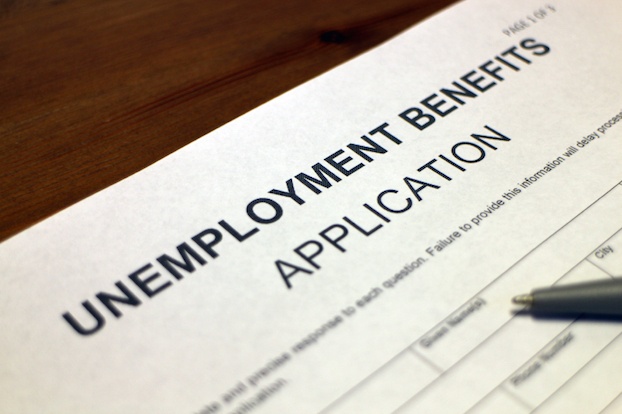
More than 3.8 million people filed for unemployment benefits last week, according to the Labor Department, as the coronavirus pandemic’s economic toll burrowed deeper into the American workforce.
The outbreak and subsequent recession have wiped away all jobs created since the Great Recession. Economists estimate the national unemployment rate sits between 15 and 20 percent, compared to about 25 percent at the peak of the Great Depression.
For comparison, 4.4 million people applied for benefits for the week ending April 18., and 30.3 million have sought benefits in the past six weeks alone.
That figure represents about 1 in 5 American workers.
There is no precedent for figures like this in modern American history.
At first, national attention focused on the unprecedented wave of layoffs tied to restaurant and other nonessential businesses, said Tara Sinclair, an economist at George Washington University and senior fellow of the Indeed Hiring Lab. But it quickly became clear that many more industries were going to be hit by the downturn. Even in the midst of a global pandemic, Sinclair pointed to recent job losses in the health care industry, as surgeries and other elective procedures are cancelled in large numbers.
“No job is safe,” Sinclair said.
During normal times, a few hundred thousand people might seek unemployment benefits on any given week, but millions of Americans have filed claims each week for more than a month. This has overwhelmed state processing centers and expedited the debate in Washington about how to respond to the economic turmoil. Many Americans have stopped paying their rent and other bills, and economists are predicting any recovery will stretch well into 2021, and possibly beyond.
During normal times, the economy will add a few million jobs each year. It could take many years for the economy to add back the 30 million jobs lost in the past six weeks.
The trouble is compounded by the fact that unemployment claims probably understate the jobs lost in the coronavirus recession. Millions of people who seek benefits have not yet been able to access them, because of overwhelmed state systems and burdensome application processes.
A recent analysis by Elise Gould and Ben Zipperer of the left-leaning Economic Policy Institute found that, from March 15 to April 18, between 8.9 million and 13.9 million more people would have filed for unemployment benefits had the application process been easier.
But a California Policy Lab analysis released Wednesday found that about 90% of people who sought unemployment benefits in recent weeks expected to eventually be called back to work with their employers.
Similarly, Google search interest in the topic of furloughs has far exceeded layoff-related searches in recent weeks. The trend is the opposite of the Great Recession, when layoffs dominated and it took years for people to find work.
The California report also found enormous gaps in who had filed for unemployment benefits. Since March 15, 37% of workers with a high school degree or less filed for unemployment – compare that with 6% of those who had a bachelor’s degree.
The next wave of layoffs could hit state and local government employees, potentially driving national unemployment figures past 40 million, said Constance Hunter, chief economist at KPMG. That pain could be especially acute in Florida and Texas, which have no personal income tax and rely heavily on sales taxes.
“If we’re thinking of it in medical terms, the patient needed a tourniquet, and we’ve stopped the bleeding on the leg, but now the arm might start bleeding,” Hunter said.
Thursday’s data shows how badly – and quickly – the economy has suffered from the pandemic as people stay home and avoid travel, dining out, shopping and entertainment. Data released by the Commerce Department on Wednesday showed the U.S. economy shrank 4.8 percent from January through March, marking the biggest decline since the Great Recession. As global air travel dries up, Boeing said Wednesday it plans a 10% staff reduction – more than 14,000 jobs.
At the same time, a growing number of states are pushing to reopen malls, factories, restaurants and other businesses, even amid worker and consumer concerns for public health.
On Tuesday, President Donald Trump signed an executive order giving the federal government broad powers to ensure that meat and poultry processing plants stay open. Simon Property Group, the nation’s largest mall owner, plans to reopen more than four dozen properties in 10 states. Florida’s Gov. Ron DeSantis joined Georgia Gov. Brian Kemp and Texas Gov. Greg Abbott, all Republicans, in rolling back statewide restrictions.
Sinclair said it’s too soon to tell whether, or how soon, jobs will return to states vying to reopen. Data from the next few weeks could spell out whether businesses are rehiring – or if the virus and declining economy keep weekly unemployment claims in the millions.
“Do people feel safer going back to work? Are they getting jobs back with their old employers?” Sinclair asked. “That will help evaluate what the economy is going to look like the rest of the year.”
(c) 2020, The Washington Post · Rachel Siegel, Andrew Van Dam
{Matzav.com}











